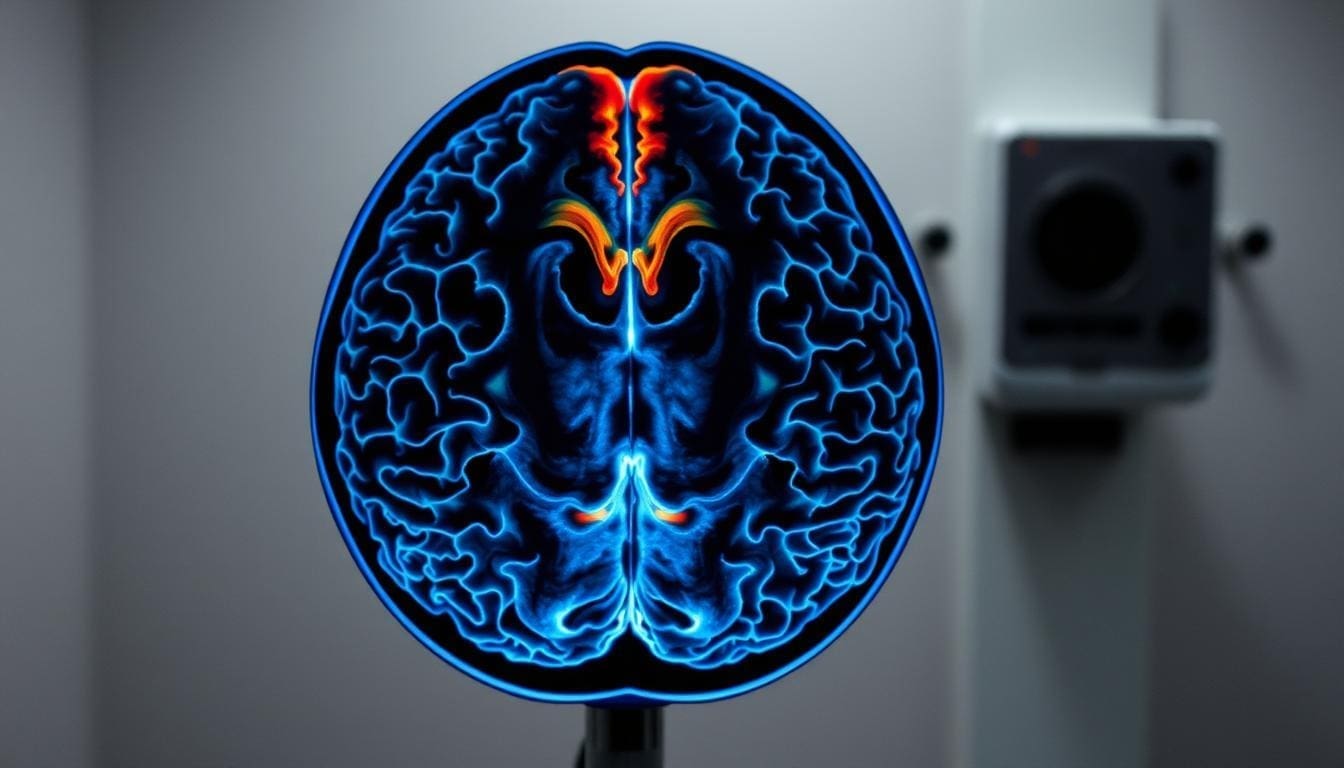Last Updated on November 27, 2025 by Bilal Hasdemir
What is the ICD 10 code for colon cancer? Colon cancer is a common cancer worldwide. The American Cancer Society says over 53,000 people in the United States died from it in 2023. It’s important to code this condition correctly for diagnosis and treatment.
The ICD-10 coding system has specific codes for different types and stages of colon cancer. This helps with accurate billing and documentation.
The ICD-10 code for colon cancer is key for healthcare providers to record patient diagnoses right. The code C18 is used for malignant neoplasm of the colon. Knowing the right ICD-10 codes for colon cancer is essential for healthcare workers.

Key Takeaways
- Colon cancer is a significant health issue worldwide.
- Accurate ICD-10 coding is vital for diagnosis and treatment.
- The ICD-10 code C18 is used for malignant neoplasm of the colon.
- Understanding ICD-10 codes ensures accurate patient records.
- Proper coding helps with precise billing and insurance claims.
Understanding ICD-10 Coding System
It’s key to know the ICD-10 coding system for diagnosing health issues like colon cancer. The ICD-10 system is a worldwide framework for classifying diseases and procedures.
History and Purpose of ICD-10
The World Health Organization (WHO) created the ICD-10 coding system. It’s a big step up from earlier systems. Its main goal is to give a standard way to code diseases.
This helps in collecting, analyzing, and comparing health data. It’s vital for tracking diseases like colon cancer. Accurate coding affects treatment and research.
Structure of ICD-10 Codes
ICD-10 codes are made of letters and numbers, with three to seven characters. They group diseases into specific categories. For example, malignant neoplasms of the colon have codes in the C18 range.
The first “C” means it’s a malignant neoplasm. The next characters give more details about the location and type of neoplasm. For instance, C18.0 is for the cecum, and C18.7 is for the sigmoid colon.
Healthcare workers need to understand ICD-10 codes to document diagnoses correctly. This includes different types of colon cancer.
Malignant Neoplasm Colon: Primary ICD-10 Code C18
Malignant neoplasm of the colon is coded with ICD-10 code C18. This code is key for diagnosing and treating colon cancer.
Definition and Classification
The ICD-10 code C18 covers malignant neoplasms of the colon, excluding the rectum. It’s part of the ICD-10 system for classifying diseases and health issues.
C18 has more specific codes for the exact colon location of the malignant neoplasm. This detail is vital for precise diagnosis and treatment.
When to Use C18 Code
Use the C18 code for malignant neoplasms in the colon. This includes different types of colon cancer, with adenocarcinoma being the most common.
Healthcare providers must document the use of C18 code accurately. This includes the diagnosis and the colon location. Accurate coding is important for both treatment and billing.
For example, when coding for colon adenocarcinoma, C18 is the primary code. It might also include codes for the histological type and metastatic sites.
Anatomical Breakdown of Colon Cancer ICD-10 Codes
It’s important to know the parts of the colon to code colon cancer correctly. The colon, or large intestine, has different sections. Each section can have cancer, so knowing where it is helps with diagnosis and coding.
C18.0: Cecum Cancer
The cecum is the first part of the large intestine. It’s a common place for colon cancer. The code C18.0 is for cancers here. Cecum cancer has its own symptoms and treatment plans.
C18.1: Appendix Cancer
Cancer can also happen in the appendix, a small pouch near the cecum. The code C18.1 is for appendix cancers. It’s key to tell appendix cancer apart from other issues because it affects treatment.
C18.2: Ascending Colon Cancer
The ascending colon goes up from the cecum. Cancer here is coded as C18.2. This type of cancer might show different symptoms and need different treatments.
C18.3: Hepatic Flexure Cancer
The hepatic flexure is near the liver, where the ascending colon meets the transverse colon. Cancers here are coded as C18.3. This area can be hard to diagnose and treat because of its location.
Correct ICD-10 codes for these areas are vital. They help with medical records, tracking, and insurance. They also make sure all doctors are on the same page about a patient’s diagnosis.
Additional Colon Cancer Location Codes
The ICD-10 system gives detailed codes for colon cancer in different parts of the colon. This detail is key for correct diagnosis, treatment plans, and tracking cancer cases. Here are more codes for where colon cancer can happen.
C18.6: Descending Colon Cancer
The descending colon is part of the large intestine, from the splenic flexure to the sigmoid colon. C18.6 is for cancers in this area. Though less common, it’s important to code it right for proper care.
C18.7: Sigmoid Colon Cancer
The sigmoid colon is a curved part of the large intestine. C18.7 is for cancers here. This type of cancer often shows symptoms like other colon cancers. Accurate coding helps in choosing the right treatment.
C18.8: Overlapping Colon Cancer
When cancer spreads across different parts of the colon, C18.8 is used. This code is key for cancers that don’t stay in one place. It helps show the cancer’s complexity in medical records.
C18.9: Colon, Unspecified
For cancers where the exact location is unknown, C18.9 is used. This code is for “colon cancer” without a specific location.
It’s important for healthcare providers to use these ICD-10 codes correctly. They help with accurate records, billing, and tracking colon cancer. Each code points to a specific area or type of cancer, helping in managing it better.
Relationship Between Colorectal Cancer Codes
Colorectal cancer coding is complex because it involves colon and rectal cancers. Each has its own ICD-10 codes. Understanding these codes is key to knowing the differences between colon and rectal cancers.
Colon vs. Rectal Cancer Coding
Colon and rectal cancers are both types of colorectal cancer. But they have different ICD-10 codes. Colon cancer is coded under C18, with subcodes for different parts of the colon. Rectal cancer gets its own codes, C19 and C20, based on where in the rectum it is.
Why is it important to know the difference in coding?
- Accurate coding helps in choosing the right treatment and improves patient care.
- It also affects research and data on cancer.
- Insurance and healthcare statistics depend on correct coding.
Junction Areas and Overlapping Sites
Coding for areas where the colon and rectum meet is tricky. The ICD-10 system has rules for these cases. It’s all about figuring out where the tumor is mainly located.
For example, tumors at the rectosigmoid junction get coded as C19. This shows how knowing the body’s layout is vital for coding. Codes for overlapping sites help capture the full complexity of the cancer.
Key things to remember for coding junction areas include:
- Know the body’s layout and boundaries.
- Use the right codes for tumors that overlap.
- Make sure to document the tumor’s main site accurately.
Learning about colorectal cancer coding helps healthcare workers. They can collect accurate data, plan better treatments, and improve patient care.
Secondary ICD-10 Codes Related to Colon Cancer
Secondary ICD-10 codes are key in documenting metastatic colon cancer and other cancers. They give a detailed view of a patient’s health. This is important for planning treatments and getting insurance.
Metastatic Colon Cancer Coding
Metastatic colon cancer means the cancer has spread to other parts of the body. ICD-10 code C78 is for cancers in the digestive organs. C79 codes are for cancers in other parts.
For example, if colon cancer spreads to the liver, the main code is C18. The secondary code is C78.7.
Secondary Malignancies
Secondary malignancies are cancers that have spread from their original place. Colon cancer often spreads to the liver, lungs, and peritoneum.
A study in a medical journal said, “Correctly coding metastatic disease is key for tracking and research on colon cancer spread.”
Using the right secondary ICD-10 codes for metastatic colon cancer helps. It makes sure patient records show the full extent of their disease. This helps in better care planning and tracking outcomes.
Histological Types and Their Impact on Coding
Knowing the histological types of colon cancer is key for correct ICD-10 coding. The way colon cancer is classified affects treatment and coding. It also impacts data for health care and research.
Adenocarcinoma of Colon
Adenocarcinoma is the most common colon cancer, making up about 95% of cases. It starts in the glandular cells of the colon’s lining. The ICD-10 code for this is mainly in the C18 category, with specific codes for different parts of the colon.
Adenocarcinoma is split based on how it looks and other details. The morphology codes and topography codes (C18 series) together give a detailed look at the tumor.
Other Histological Types
Adenocarcinoma is the main type, but there are others, like:
- Neuroendocrine tumors: These are rare and can be benign or cancerous.
- Squamous cell carcinoma: A rare colon cancer type.
- Adenosquamous carcinoma: It has glandular and squamous cell features.
Each type has its own coding needs for accurate classification.
Morphology Codes
Morphology codes describe the tumor’s cell type and behavior. They are vital for detailed cancer information. For colon cancer, adenocarcinoma is the most common code.
| Histological Type | Morphology Code | ICD-10 Code |
| Adenocarcinoma | 8140/3 | C18.x |
| Neuroendocrine tumor | 8240/3 | C18.x |
Using morphology codes with ICD-10 topography codes makes cancer coding more specific. This helps in better data analysis and research.
Staging and Grading in ICD-10 Coding for Colon Cancer
Effective ICD-10 coding for colon cancer diagnosis depends on precise staging and grading information. Staging shows how far the cancer has spread. Grading looks at the cancer cells under a microscope.
The TNM classification system is key for staging colon cancer. It looks at three main factors:
- T (Tumor): The size and extent of the main tumor.
- N (Node): Whether the cancer has spread to nearby lymph nodes.
- M (Metastasis): Whether the cancer has spread to other parts of the body.
TNM Classification
The TNM classification gives a detailed staging for colon cancer. For example, a T1 tumor is in the innermost lining of the colon. N0 means no cancer in nearby lymph nodes.
“The TNM system is a critical tool for determining the prognosis and treatment plan for colon cancer patients.” – American Cancer Society
Additional Digits for Staging
In ICD-10 coding, extra digits give more specific details about the stage and grade of colon cancer. For instance, C18.9 (Malignant neoplasm of colon, unspecified) can be detailed further with extra digits to show the tumor stage.
Accurate staging and grading are key for picking the right ICD-10 codes. These codes affect treatment plans, insurance, and cancer registry data.
Healthcare providers must document thoroughly and accurately. This supports precise ICD-10 coding for colon cancer.
Coding Colon Cancer Complications and Symptoms
It’s important to know the complications and symptoms of colon cancer for ICD-10 coding. Colon cancer is a big health issue. It can cause many problems that affect how patients are treated.
Common Complications
Colon cancer can cause blockages, holes in the colon, and cancer spreading to other parts. It’s key to code these problems right. This helps patients get the right care.
- Obstruction: A common complication where the tumor blocks the colon.
- Perforation: A serious condition where the tumor causes a hole in the colon wall.
- Metastasis: The spread of cancer to other parts of the body.
| Complication | ICD-10 Code | Description |
| Obstruction | C18.9 | Malignant neoplasm of colon, unspecified |
| Perforation | K65.0 | Generalized peritonitis |
| Metastasis | C78.5 | Secondary malignant neoplasm of large intestine and rectum |
Symptom Coding
Symptoms like belly pain, changes in bowel habits, and losing weight are linked to colon cancer. It’s critical to code these symptoms right. This helps in giving the best care to patients.
The ICD-10 coding system has specific codes for these symptoms. This ensures detailed records of patient conditions.
- Abdominal Pain: R10.9 – Unspecified abdominal pain
- Change in Bowel Habits: R19.4 – Change in bowel habit
- Weight Loss: R63.4 – Abnormal weight loss
By accurately coding complications and symptoms, healthcare providers can give patients the right care. This is vital for their health.
Colon Cancer Treatment Procedure Codes
Colon cancer treatment includes surgery, chemotherapy, and radiation therapy. Each step needs accurate coding.
Correct coding for colon cancer treatment is key for billing and insurance. It also keeps patient records up to date and tracks treatment success.
Surgical Procedure Codes
Surgery is a main treatment for colon cancer. The codes for these surgeries depend on the type and how much is done.
- Colectomy: Removing part or all of the colon.
- Proctocolectomy: Taking out the colon and rectum.
- Colostomy: Making an opening in the colon for waste.
| Surgical Procedure | CPT Code | Description |
| Colectomy, partial | 44140 | Partial removal of the colon. |
| Proctocolectomy | 44155 | Removing colon and rectum with ileostomy. |
| Colostomy | 44320 | Creating a colostomy. |
Chemotherapy Coding
Chemotherapy is used with surgery or alone for colon cancer. The codes cover the drug and how it’s given.
Chemotherapy Administration Codes:
- 96413: Chemotherapy given through an IV.
- 96415: More IV chemotherapy given after the first.
Radiation Therapy Coding
Radiation therapy treats colon cancer that has spread. The codes depend on the type and how it’s given.
Radiation Therapy Codes:
- 77427: Radiation therapy given weekly.
- 77385: Simple intensity modulated radiation therapy (IMRT).
Knowing the procedure codes for colon cancer treatment is vital. It helps with billing and keeps patient records complete.
Coding Challenges and Common Errors
Accurate ICD-10 coding for colon cancer is key. But, several challenges and common errors can happen. Healthcare providers and coders need to know these to ensure correct coding and follow rules.
Documentation Requirements
One big challenge in ICD-10 coding for colon cancer is meeting documentation needs. Complete and detailed documentation is vital for accurate coding. This includes:
- Histological confirmation of the tumor
- Specific location within the colon
- Stage and grade of the cancer
- Any relevant metastasis or secondary malignancies
Without enough documentation, coding errors and reimbursement problems can occur. So, it’s important for healthcare providers to understand the need for detailed documentation.
Specificity Issues
ICD-10 coding for colon cancer needs high specificity. Specificity issues can happen when:
- The exact location within the colon is not specified
- The type of malignancy (e.g., adenocarcinoma) is not documented
- The stage or grade of the cancer is not provided
Coders must work closely with healthcare providers to ensure all necessary information is captured and coded accurately.
Sequencing Guidelines
Proper sequencing of ICD-10 codes is key for accurate billing and data analysis. For colon cancer, the primary malignancy code should be sequenced first. Then, any relevant secondary codes for metastasis or other related conditions should follow.
| Condition | Primary Code | Secondary Code |
| Colon Cancer with Liver Metastasis | C18.9 (Colon, Unspecified) | C78.7 (Secondary malignant neoplasm of liver) |
| Colon Cancer with Lymph Node Involvement | C18.9 (Colon, Unspecified) | C77.5 (Secondary malignant neoplasm of lymph nodes of pelvis) |
Knowing and applying these sequencing guidelines correctly can help avoid coding errors. It ensures compliance with ICD-10 regulations.
Conclusion
Accurate ICD-10 coding is key for colon cancer diagnosis and treatment. Knowing the right codes helps healthcare providers document patient data well.
It’s important to be aware of colon cancer to catch it early. Knowing who’s at risk, like those with family history or certain genes, helps with early screening.
Diagnosing colon cancer involves clinical checks, imaging, and lab tests. Using the right ICD-10 codes ensures patients get the right care.
Preventing colon cancer is also vital. This includes making healthy lifestyle choices and regular screenings. By raising awareness and using accurate codes, we can help patients and fight this disease better.
FAQ
What is the ICD-10 code for colon cancer?
The main ICD-10 code for colon cancer is C18. It stands for a malignant neoplasm of the colon.
How do I code for a specific location within the colon?
The colon is split into different areas, each with its own ICD-10 code. For instance, C18.0 is for cecum cancer. C18.2 is for ascending colon cancer, and C18.7 is for sigmoid colon cancer.
What is the difference between colon and rectal cancer coding?
Colon cancer is coded as C18, while rectal cancer is coded as C20. But, cancers at the colon-rectum junction need special coding.
How do I code for metastatic colon cancer?
For metastatic colon cancer, use secondary ICD-10 codes. For example, liver metastasis is coded as C78.7, along with the primary code C18.
What is the importance of staging and grading in ICD-10 coding for colon cancer?
Staging and grading are key for understanding colon cancer’s extent and severity. The TNM system is used for staging. Additional digits provide more detailed information about the tumor.
How do I code for complications and symptoms associated with colon cancer?
Use extra ICD-10 codes for complications and symptoms of colon cancer. For example, K56.6 is for bowel obstruction due to cancer.
What are some common challenges and errors in coding for colon cancer?
Challenges include documentation, specificity, and sequencing. It’s vital to have accurate and complete documentation to avoid errors.
How can I stay aware of the risks and prevention methods for colon cancer?
Know the risks, like family history and age, and take steps to prevent it. Regular screenings and a healthy diet are key.
What are the treatment options for colon cancer, and how are they coded?
Treatments include surgery, chemotherapy, and radiation. Each has its own ICD-10 procedure codes, like for colectomies.
What is the significance of accurate ICD-10 coding for colon cancer diagnosis and treatment?
Accurate coding is essential for correct diagnosis and treatment. It also helps track and analyze health data, improving patient care.






